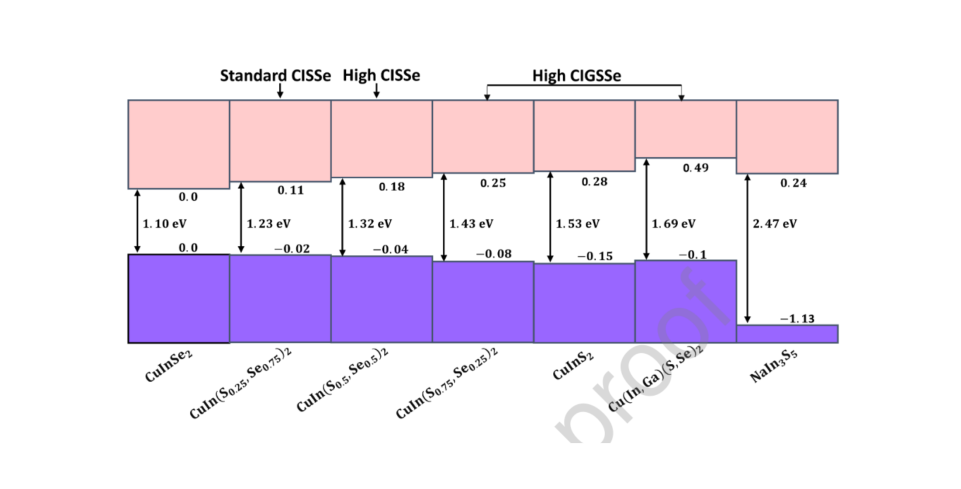CIGS-Thin film solar cells: Intense sulphirization leads to superior heterojunctions
Ab-initio calculations shows that the conduction band offset is strongly reduced by intense sulphurization.
2021/09/16 by K. Albe
Sulphurization processes in Cu(In,Ga)Se 2 thin-film solar cells have been intensively studied in the last decade as a viable alternative to the existing Ga-grading. In a joined work with experimental groups we reveal how the performance of CIGS thin-film solar cells can be significantly improved.

The main advantage of using S grading is that by substituting Se with S we will achieve not only an upshift of the conduction-band minimum as done by employing Ga grading, but also a downshift of the valence-band maximum. Several existing studies stipulate that S is very often inserted in too high concentrations into Cu(In,Ga)Se2 absorber by sulphurization resulting in a deteriorated device performance instead of the expected beneficial effect. However, we demonstrate here that the intense sulphurization process when accompanied by Ga-grading leads to improved electrical properties of the buffer/absorber heterojunction. More exactly, this double grading at the absorber surface leads to strong reduction of the p-doping and hence to a change in the band diagram. This work also proves that the intense sulphurization process is accompanied by strong structural and chemical changes, i.e. by the formation of a S-rich CuIn(S,Se)2 compound at the absorber surface. Finally, all these experimental findings were complemented by ab-initio calculations of the conduction-band and valence-band offsets between absorber and buffer obtained by using density functional theory. Hence, the present work opens up new possibilities for synthesizing Cu(In,Ga)(Se,S)2 solar cells with superior cell performance when using an intense sulphurization process.



